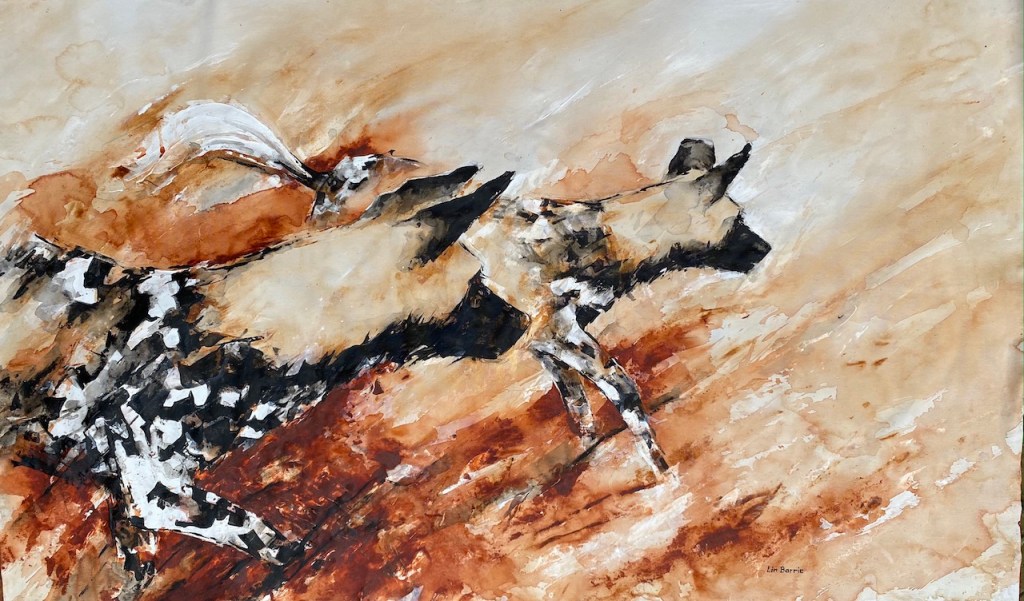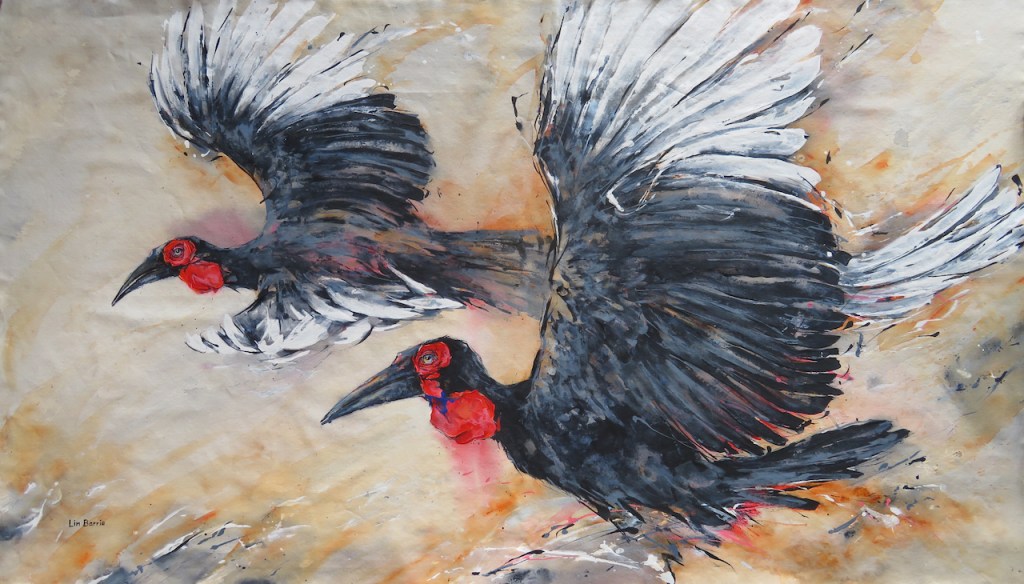Lycaon pictus; African Wild Dogs in my back garden…. by Lin Barrie
Location: at our bush house, ‘Tsavene’, Save Valley Conservancy, Zimbabwe.
Date: September 28th, 2021
As Clive and I sat quietly watching the orange African sunset, suddenly an impala doe leaped past us, below the high verandah we sat on.
She bounced high in the air, kicking backwards and we knew – something was coming….
At the same time our two resident klipspringers erupted past us on the higher rock, dashing for cover- something was indeed coming! …
A wild dog appeared out of nowhere, a streak of lightening as she leaped high and gripped the impala doe.
The two tumbled together, gold tan and black tumbling in the dust, and immediately two more wild dogs bounded in and, with a brief bellow the impala doe rapidly became their supper.

Stomach contents stripped out and left on the side, the dogs ate fast; twenty minutes and the three very full dogs had finished all the meat.
Sated, they began halfheartedly chewing bones, and tugging the twisted carcass between them as night started to close in…
Resting between tugging at the bones, they played halfheartedly, too full to move much!

After drinking at our waterhole, they faded into the dusk, leaving the impala skeleton and the stomach behind.
Their haunting Hoo calls drifted through the African night as they connected somewhere out there in the African night with the rest of their pack.
Perhaps their full bellies enabled them to regurgitate for any half grown wild dog pups waiting out in the mopani woodland that might have needed a meal!

Later that night, as I worked late in my art studio, I heard spotted hyenas outside chatting and mumbling over the carcass- the stomach must have been a real find for them, (especially as we know there is a hyena den near our house that they constantly use, and any pups would have benefitted greatly by the gift of a tasty impala meal…)!

The next morning our resident band of merry men, the tiny dwarf mongooses, came ranging through, and although the impala skeleton had disappeared, (carried away by the hyenas I presume), I saw many of the dwarf mongooses deliberately foraging amongst the shards of bones and meat fragments.
Very interestingly, shortly thereafter in flew our southern ground hornbill family, two adults and two sub adults, (one younger, one older subadult). They started exploring and soon found the kill zone. Whether they “smelt” the meat fragments left here and there on the ground (?)..,or whether they happened upon the bone and meat titbits by chance, we don’t know, but we watched them deliberately forage around the area. The youngest chick begged constantly and loudly, and I saw an adult pick up a dangling meaty morsel and feed it to the delighted youngster.

Eat and be eaten, the fascinating Circle of Life…how many other creatures benefit from a predators kill, how many mothers’ babies get fed…..
